Houseplants are a great way to bring life and vibrancy to your home, but it’s important to keep them properly hydrated to ensure they thrive. In this houseplant watering guide, we will provide you with indoor plant hydration tips and techniques on how to tell if a plant needs water. By understanding the signs and avoiding common watering mistakes, you’ll be able to maintain the health and beauty of your indoor plants.
Proper hydration is key to the success of your houseplants. Overwatering can lead to root rot and other issues, while underwatering can cause the plants to wither and die. By learning how to read the signs and providing the right amount of water, you can ensure that your plants stay healthy and lush.
Understanding Houseplant Water Needs
Properly watering your houseplants is crucial for their health and growth. Understanding the water needs of your indoor plants is essential to avoid overwatering or underwatering, which can lead to various issues. Different plants have different water requirements, so it’s important to research and understand the specific needs of the houseplants in your care.
Overwatering is a common mistake that can have detrimental effects on your plants. Signs of overwatering include yellowing or wilting leaves and waterlogged soil. When the soil is constantly saturated, the roots are deprived of oxygen and may start to decay. This can lead to root rot and eventually the death of the plant.
On the other hand, underwatering can cause the plant to suffer from dry, crispy leaves and stunted growth. It’s important to find a balance and provide your plants with just the right amount of water.
Different factors can affect how often you should water your plants. Factors such as the type of plant, soil moisture, and environmental conditions all play a role. Some plants prefer to dry out slightly between waterings, while others require consistently moist soil.
Research the specific water needs of your houseplants to understand their individual preferences. Here are a few general guidelines:
- Check the soil: Before watering your plants, check the moisture level of the soil. Stick your finger about an inch into the soil. If it feels dry, it’s time to water. If it’s still moist, wait a bit longer.
- Use well-draining soil: It’s important to use a well-draining potting mix to prevent water from sitting at the bottom of the pot. This will help prevent waterlogged soil and promote healthier root growth.
- Observe the plants: Pay attention to how your plants respond to watering. Are they thriving and growing, or are they showing signs of stress? Adjust your watering frequency accordingly.
“Understanding the water needs of your houseplants is essential to avoid overwatering or underwatering.”
By understanding the water needs of your indoor plants and providing them with appropriate care, you can help them thrive and flourish in your home.
How to Tell If a Plant Needs Water
Knowing when to water your plant is essential for its health and well-being. By keeping an eye out for certain signs, you can easily determine if your plant needs a drink.
- Dry soil: One of the most obvious signs that your plant is thirsty is dry soil. Stick your finger about an inch deep into the soil. If it feels dry, it’s time to water.
- Wilting leaves: When plants lack water, their leaves may start to wilt. If you notice your plant’s leaves drooping or becoming limp, it’s a clear indication that it needs hydration.
- Light pot weight: Lift up the pot and gauge its weight. If it feels significantly lighter than usual, it’s a sign that the soil has dried out and the plant needs watering.
Another simple method to check soil moisture is the finger test. Stick your finger into the soil up to the second knuckle. If it feels moist, your plant is adequately hydrated. If it feels dry, it’s time to water.
While determining when to water your indoor plants is essential, it’s also important to consider the best time to do so. Contrary to popular belief, it’s generally recommended to water indoor plants during the day rather than at night. Watering at night can increase the risk of fungal diseases due to prolonged moisture on the leaves and soil. By watering during the day, you give the excess water a chance to evaporate, reducing the chances of fungal growth.
Keep an Eye on Your Plants’ Hydration Needs
Proper watering is crucial for the health and vitality of your indoor plants. By paying attention to signs of dry soil, wilting leaves, and overall plant weight, you can ensure that your plants receive the water they need to thrive. Additionally, watering during the day and avoiding nighttime watering helps prevent fungal diseases. Remember, a little attention to detail goes a long way in maintaining the well-being of your beloved houseplants.”
Best Watering Techniques for Indoor Plants
When it comes to watering your indoor plants, timing and technique are key to maintaining their health and vitality. In this section, we will explore the best practices for watering indoor plants, including the optimal time of day and tips for assessing soil moisture.
Timing Is Everything
One of the most important factors in watering indoor plants is choosing the right time of day. The best time to water your plants is in the morning, preferably before the heat of the day sets in. This allows the plants ample time to absorb the water before it evaporates or causes excessive moisture on the leaves, which can lead to fungal diseases.
Thorough and Deep Watering
When it’s time to water your indoor plants, ensuring that the entire root system receives adequate moisture is crucial. To achieve this, pour water slowly into the pot until it begins to drain from the bottom, indicating that the soil is thoroughly saturated. This method allows the water to penetrate deeply, reaching the roots and promoting healthy growth.
Monitoring Soil Moisture
To determine when your plants are in need of water, it’s essential to monitor the moisture level in the soil. One simple way to do this is by using your finger to check the soil’s dryness. Insert your finger about an inch deep into the soil; if it feels dry, it’s time to water your plants. However, if the soil feels slightly damp, it’s best to wait a little longer before watering again to avoid overhydration.
Visual Guide: Table with Examples of Soil Moisture Levels
| Soil Moisture Level | Visual Appearance | Watering Recommendation |
|---|---|---|
| Dry | Water the plant thoroughly | |
| Slightly moist | 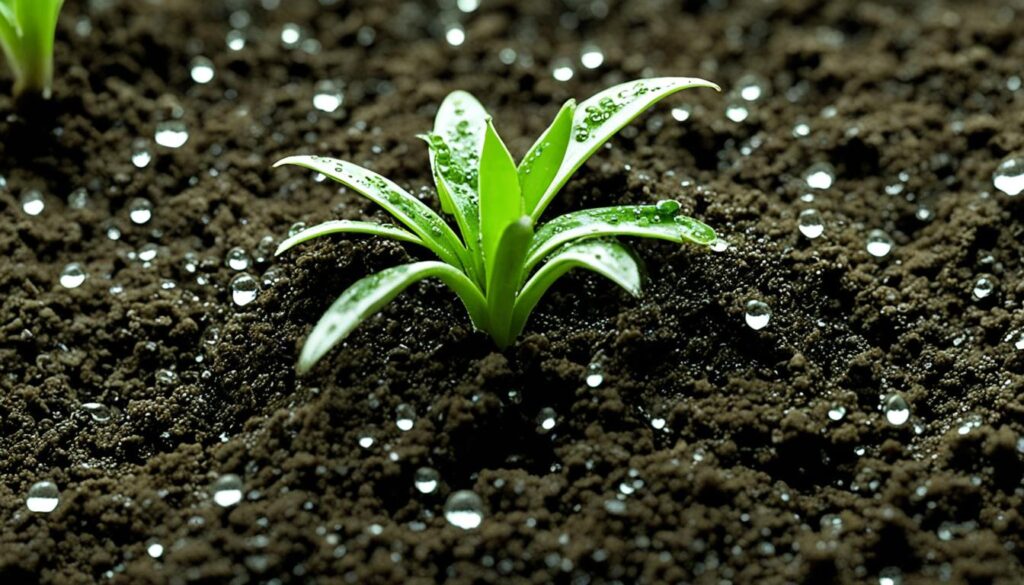 | Wait before watering again |
| Moist | Wait before watering again |
By following these best watering techniques, you can ensure that your indoor plants receive the appropriate amount of water they need to thrive. Remember to water in the morning, water thoroughly, and keep an eye on soil moisture levels to maintain the health and beauty of your beloved houseplants.
Watering Indoor Plants While on Vacation
If you’re planning a vacation and won’t be able to water your indoor plants regularly, don’t worry! There are a couple of options you can consider to ensure your plants stay well-hydrated in your absence.
One option is to ask a neighbor, friend, or family member to take care of your plants while you’re away. Provide them with clear instructions on how often to water each plant and any specific care requirements. This can be a great solution if you have someone reliable who can visit your home regularly.
Another option is to invest in self-watering systems for your houseplants. These systems provide a continuous water supply, ensuring your plants receive the right amount of moisture while you enjoy your vacation. Self-watering systems typically consist of a reservoir that slowly releases water into the soil as needed. This helps maintain optimal soil moisture levels and prevents over or under watering.
Before leaving, it’s crucial to properly set up and test the self-watering systems to ensure they are functioning correctly. Follow the manufacturer’s instructions for installation and make any necessary adjustments to the water flow. Test the systems by filling the reservoirs and monitoring how the water is distributed to the plants. This will give you peace of mind knowing that your plants will be well taken care of.
To give you a better idea of how self-watering systems work, here’s an example:
| Self-Watering System | Benefits |
|---|---|
| An automatic watering globe | – Provides a slow, continuous water release – Eliminates the need for daily watering – Ideal for small to medium-sized plants |
| A self-watering pot | – Features a reservoir and wicking system – Maintains optimal soil moisture – Suitable for a variety of plant sizes |
| A drip irrigation system | – Delivers water directly to plant roots – Customizable for different plant needs – Great for larger plant collections |
With the right self-watering system in place, your plants will have access to water whenever they need it, keeping them healthy and happy throughout your vacation.
Expert Tip:
It’s a good idea to place your self-watering systems on a tray or saucer to catch any excess water that may drain out. This will prevent any potential damage to your furniture or flooring.
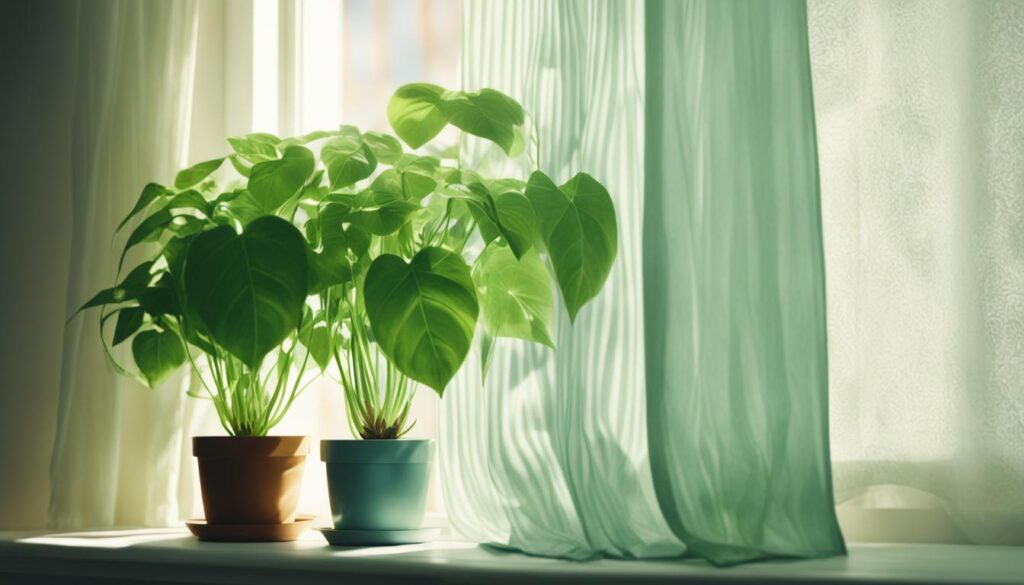
No matter which option you choose – whether it’s relying on a helpful neighbor or using self-watering systems – you can enjoy your vacation knowing that your indoor plants will receive the care they need in your absence.
Avoiding Common Watering Mistakes
When caring for indoor plants, it’s important to be aware of common watering mistakes that can hinder their health and growth. By avoiding these mistakes, you can ensure that your plants thrive and stay lush and vibrant.
Overwatering: One of the most common mistakes is overwatering, which can lead to root rot and other issues. Many plant owners tend to err on the side of caution and water their plants too frequently. However, not all plants have the same water requirements, and overwatering can suffocate the roots, preventing them from absorbing nutrients properly. To avoid overwatering, it’s essential to water your plants only when they need it.
Underwatering: On the other hand, underwatering is another common mistake. Some plant owners may forget to water their plants regularly, leading to dry and wilted leaves. It’s important to establish a consistent watering routine and check the moisture levels of the soil frequently. If the top inch of the soil feels dry to the touch, it’s a sign that your plants need watering.
Tip: To determine if your plants need water, you can use the finger test. Stick your finger about an inch into the soil, and if it feels damp, you can hold off on watering. If it feels dry, it’s time to water your plants.
Another mistake to avoid is using small amounts of water when watering your plants. Small water quantities may not be enough to thoroughly hydrate the plant, especially when it has a large root system. Instead, water your plants thoroughly until water starts to come out of the drainage holes in the pot. This ensures that the entire root system receives adequate hydration.
Common Watering Mistakes to Avoid:
- Overwatering plants
- Underwatering plants
- Using small amounts of water when watering
By being mindful of these common watering mistakes and adjusting your watering routine accordingly, you’ll be able to provide your plants with the proper hydration they need for healthy growth.
Comparison of Proper Watering vs. Common Mistakes
| Proper Watering Techniques | Common Watering Mistakes |
|---|---|
| Watering plants only when they need it | Overwatering, leading to root rot |
| Thoroughly watering until water comes out of the drainage holes | Using small amounts of water that may not reach the entire root system |
Importance of Proper Drainage and Soil Moisture
Proper drainage and soil moisture management are essential factors in maintaining the health and vitality of your indoor plants. By ensuring adequate drainage and monitoring the moisture levels in the soil, you can create an optimal environment for your houseplants to thrive.
One of the key aspects of indoor watering is the use of pots with drainage holes. These holes allow excess water to escape and prevent waterlogging, which can lead to root rot and other harmful conditions. When choosing pots for your houseplants, prioritize ones that have drainage holes to promote proper drainage.
Alongside drainage, monitoring soil moisture is equally important. Regularly checking the soil moisture helps you determine when your plants need watering. You can use simple techniques like sticking your finger into the soil or using a moisture meter to assess the moisture content. Over time, you’ll become familiar with the specific moisture needs of your plants and be able to adjust your watering routine accordingly.
Remember that different plants have different moisture requirements, so understanding the specific needs of your houseplants is crucial. Factors such as plant species, pot size, and environmental conditions all influence how frequently you should water your indoor plants.
Indoor Plant Moisture Needs
| Plant Name | Ideal Moisture Level | Watering Frequency |
|---|---|---|
| Snake Plant (Sansevieria) | Moist but not soggy | Every 2-3 weeks |
| Spider Plant (Chlorophytum comosum) | Moist, with slightly drier intervals | Every 1-2 weeks |
| Pothos (Epipremnum aureum) | Moist, with periods of drying out | Every 1-2 weeks |
| Peace Lily (Spathiphyllum) | Moist, avoid over-saturation | Every 1-2 weeks |
| Monstera Deliciosa | Slightly moist, allow top inch to dry out | Every 1-2 weeks |
While this table provides general guidelines, it’s important to research the specific moisture needs of your houseplants for more accurate watering instructions.
By prioritizing proper drainage and monitoring soil moisture, you can ensure that your indoor plants receive the right amount of water to thrive. Remember to observe your plants closely and make adjustments to your watering routine based on their individual needs.
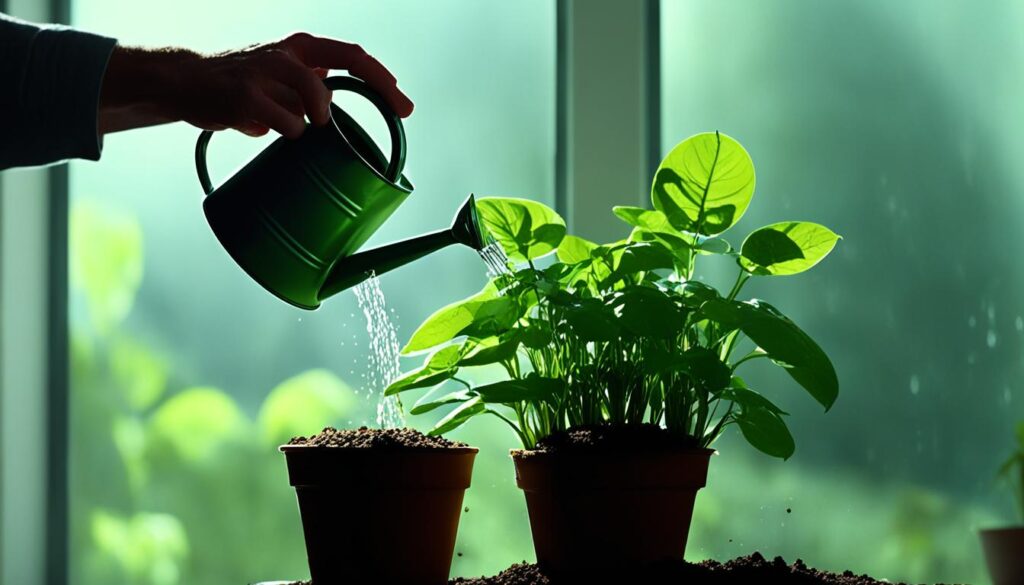
The Role of Feeding and Fertilizing
In addition to proper watering, feeding and fertilizing your houseplants is essential for their growth and health. Plants require certain nutrients to thrive, and these can be provided through fertilizers. It’s important to choose the right fertilizer for your plants and to follow the instructions for application. Most houseplants benefit from regular feeding during the growing season and a break during the dormant period. Understanding the nutritional needs of your plants and providing them with the right nutrients will ensure they stay healthy and vibrant.
Fertilizers are formulated to supplement and enrich the soil, supplying essential nutrients that may be lacking. These nutrients, also known as macronutrients and micronutrients, aid in plant growth, root development, flowering, and overall vitality.
When selecting a fertilizer, consider the specific needs of your houseplants. Different plants have different nutritional requirements, so it’s important to choose a fertilizer that suits their needs. Look for fertilizers labeled for indoor plants or houseplants, as they are formulated with the necessary nutrients in balanced proportions.
Macronutrients to Look for in Fertilizers:
- Nitrogen (N): promotes healthy leaf and stem growth
- Phosphorus (P): aids in root development and flowering
- Potassium (K): contributes to overall plant health and disease resistance
These macronutrients are usually displayed as a ratio on fertilizer packaging. For example, a fertilizer with a ratio of 10-10-10 would contain equal proportions of nitrogen, phosphorus, and potassium. Adjust the ratios according to your plant’s specific needs.
In addition to macronutrients, plants also require micronutrients, albeit in smaller quantities. These include iron, manganese, zinc, and copper. Look for fertilizers that contain these essential micronutrients to ensure your plants receive a comprehensive nutrient profile.
When applying fertilizer, carefully follow the instructions provided. Applying too much can burn the roots and damage the plant, while applying too little may not provide adequate nutrition. It’s important to strike a balance and monitor the plant’s response to ensure optimal growth.
Remember to fertilize your houseplants during the growing season, typically spring and summer, as this is when plants are actively using nutrients for growth. Reduce or cease fertilization during the dormant period, usually in late fall and winter, as plants require less nutrition during this time.
By understanding your plants’ nutritional needs and providing them with the proper feeding and fertilization regimen, you can ensure they receive the essential nutrients they require to thrive.
Conclusion
Taking care of your houseplants and properly hydrating them is essential for their overall health and well-being. By understanding their water needs, avoiding common watering mistakes, and providing the right environment, you can ensure that your indoor plants thrive.
Regularly check the moisture level in the soil by using your finger to assess if it’s dry or moist. Water your plants thoroughly when needed, making sure to water the entire root system. Be attentive to the signs your plants give you, such as wilting leaves or dry soil, as these indicate when it’s time to water.
By following these houseplant care tips, you can keep your indoor plants healthy and hydrated. Remember to maintain proper drainage by using pots with drainage holes and adjust your watering routine based on the specific needs of your plants. With proper care, your houseplants will bring beauty and freshness to your home for years to come.
For more valuable Expert Tips check out our comprehensive Houseplant Guide to Tips for Indoor Plant Care.
If you happen to be nearby, stop in at The Landscape Connection and say Hi. Michelle and I would love to meet you.
FAQ
How can I tell if my houseplant needs water?
There are a few signs to look for. Dry soil, wilting leaves, and a lighter weight when you pick up the pot are all indications that your plant may need water. You can also use the finger test by sticking your finger into the soil to check for moisture.
Can I water my indoor plants at night?
It’s generally best to water indoor plants during the day rather than at night. Watering at night can increase the risk of fungal diseases. The best time to water indoor plants is in the morning, allowing the plants time to absorb the water before the heat of the day.
What is the best way to water indoor plants?
It’s important to water plants thoroughly, ensuring that the entire root system gets a good soak. Pour water slowly into the pot until it starts coming out of the drainage holes. Monitor the moisture level in the soil by regularly checking with your finger.
How can I water my indoor plants while on vacation?
If you’re going on vacation and won’t be able to water your plants regularly, there are a few options. You can ask a neighbor or friend to water the plants for you. Another option is to use self-watering systems, which provide a continuous water supply to your plants while you’re away.
What are some common watering mistakes to avoid?
One common mistake is overwatering, which can lead to root rot. It’s important to water plants only when they need it and to ensure that the water is fully absorbed by the soil. Another mistake is using small amounts of water, which may not be enough to thoroughly hydrate the plant.
How important is proper drainage for indoor plants?
Proper drainage is crucial for the health of indoor plants. It’s important to use pots with drainage holes to allow excess water to escape and prevent waterlogging. You should also regularly check the soil moisture to maintain the right level for your plants.
How can I feed and fertilize my houseplants?
Feeding and fertilizing are essential for the growth and health of houseplants. Choose the right fertilizer for your plants and follow the instructions for application. Most houseplants benefit from regular feeding during the growing season and a break during the dormant period.


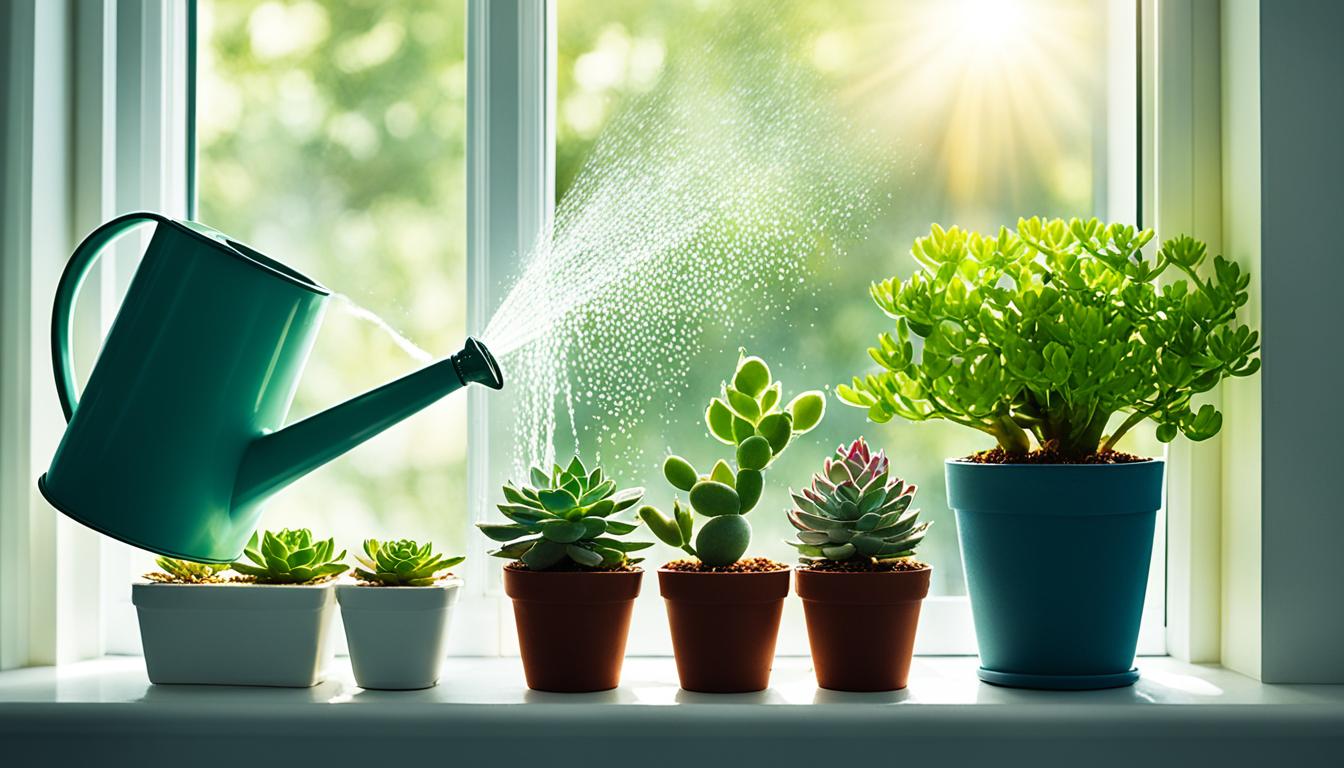
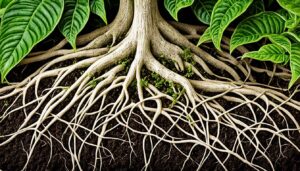
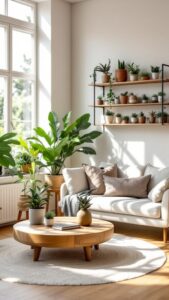
Pingback: The Ultimate Guide to Indoor Plant Care: 20 Essential Tips – Trusted House Plant Guide